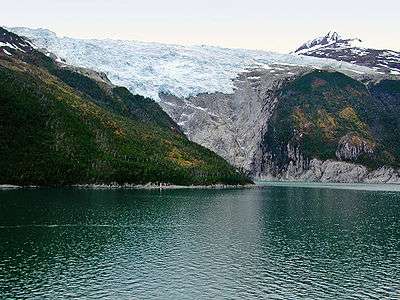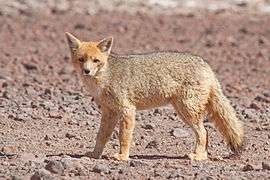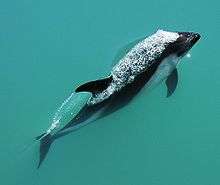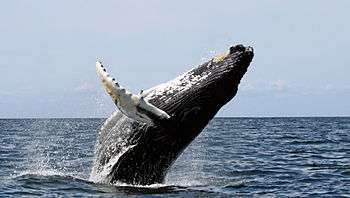Alberto de Agostini National Park
| Alberto de Agostini National Park | |
|---|---|
|
IUCN category II (national park) | |
|
Marinelli Glacier | |
 | |
| Location |
Magallanes Region, Chile |
| Nearest city | Punta Arenas |
| Coordinates | 54°44′57″S 70°26′23″W / 54.74906°S 70.43967°WCoordinates: 54°44′57″S 70°26′23″W / 54.74906°S 70.43967°W |
| Area | 14,600 km2 (5,637 sq mi) |
| Established | January 22, 1965 |
| Governing body | National Forest Corporation (Chile) |
Alberto de Agostini National Park (Spanish pronunciation: [alˈβerto ðe aɣosˈtini]) is a Protected Area created on land that was formerly part of "Hollanda" forest reserve and "Hernando de Magallanes National Park". It covers 14,600 km2 (5,637 sq mi) and includes the Cordillera Darwin mountain range, which is the final land-based stretch of the Andes before it becomes a chain of mountains appearing as small islands that sink into the Pacific Ocean and the Beagle Channel.
The park, along with Cabo de Hornos National Park, was designated a Biosphere Reserve by UNESCO in 2005. As part of the Magallanes Sub-Polar (or Sub-Antarctic) Evergreen Rainforest, UNESCO highlights the area’s "mosaic of contrasting ecosystems and unique and singular characteristics on a world level."[1]
Several tidewater glaciers and steep fjords can be found in the park. It also comprises the Gordon, Cook and Londonderry islands, as well as part of Hoste Island (excluding the Hardy Peninsula and other portions).
History
The park is named after one of the most important Salesian priests in Chilean history, Father Alberto Maria De Agostini. The Italian missionary, explorer, photographer and writer is known for his discoveries, photographs and maps of the region.
The region was visited by Charles Darwin, who encountered its native Fuegian peoples in the Murray Channel. Fuegian peoples include the Selk'nam, Haush, Manek'enk and Yaghan), the latter settling the lands along the channel approximately 10,000 years ago. The encounter would be of vital importance when the scientist sat down to write his theory on human evolution.[2][3] Other areas of the park, such as the picturesque Agostini Fjord, were only discovered in the past century.
Alberto de Agostini National Park, along with Cabo de Hornos National Park, was named the Cabo de Hornos World Biosphere Reserve by UNESCO in 2005.[4]
Location
The park is located 80 nautical miles southwest of Punta Arenas, the nearest city, in Magallanes y la Antártica Chilena region, stretching over three provinces: (Magallanes, Tierra del Fuego and Antártica Chilena).
Geography
The park features a highly irregular coastline, which is deeply indented by fjords. The centerpiece of the park is the Cordillera Darwin, whose slopes drop precipitously to the sea. The Darwin range is dominated by Monte Darwin and Monte Sarmiento. The valleys not filled by the sea are covered by glaciers, which also occupy small high plateaus.
Geology

Much of the landscape of the park has been sculpted by glaciers. The largest glacier is the Marinelli, which is in a state of retreat as of 2008.[5] One of the most stunning portions of the park is the Seno Pía, an embayment of the Beagle Channel.[6] The glaciers and mountains in this area form an amazing scenery, which also comprises the majestic Mount Darwin. Another glacier-related highlight of the park is the Avenue of the Glaciers, where the word avenue is used in a figurative sense describing part of the north-west arm of the Beagle Channel where it is possible to view several glaciers along the north shore. These glaciers are: España, Romanche, Alemania (also known as Roncagli), Italia, Francia and Holanda.[7]
Climate
Tierra del Fuego experiences extreme weather. The climate of the park is classified as subpolar oceanic climate and is wet, cold and windy.[8]
Biology

Flora
The park is part of the Magellanic subpolar forests ecoregion. This pristine coastal ecosystem is home to various species of trees such as the coihue (nothofagus betuloides) and canelo (drimys winteri).
Fauna
Mammals found in the park include the Culpeo or Andean fox (lycalopex culpaeus), the South American gray fox (lycalopex griseus), also known as the Patagonian fox, the marine otter (lontra felina), known locally as chungungo, the South American sea lion, the southern elephant seals, the leopard seal (hydrurga leptonyx), the Chilean dolphin (cephalorhynchus eutropia, also known as the black dolphin or tonina), the Burmeister's porpoise (phocoena spinipinnis), Peale's dolphin (lagenorhynchus australis), the humpback whale (megaptera novaeangliae), and the guanaco (lama guanicoe).
Sea birds include the southern royal albatross (diomedea epomophora),[9] the Magellanic woodpecker (campephilus magellanicus), the white-crested elaenia (elaenia albiceps),[10] the cormorant, the austral thrush (turdus falcklandii) or Magellan thrush, among many others.
Tourism
There are no roads to the park, and as such, most visitors arrive by cruise ships or other boats, generally from Punta Arenas. There is no entry fee and no facilities for tourists, but there are park rangers.[11]
- Alberto de Agostini National Park Fauna
-

South American sea lion (otaria flavescens, formerly Otaria byronia), also known as the southern sea lion or Patagonian sea lion.
-

Culpeo (lycalopex culpaeus)
-

Peale's dolphin (lagenorhynchus australis)
-

Chilean dolphin (cephalorhynchus eutropia)
-

Humpback whale (megaptera novaeangliae)
-

Southern royal albatross (diomedea epomophora).
-

Southern giant petrel (macronectes giganteus), also known as the Antarctic giant petrel, giant fulmar, stinker, and stinkpot.
See also
References
- ↑ Biosphere Reserve of the Magallanes Sub-Polar region UNESCO 2009 - 2014 retrieved on January 07, 2015
- ↑ Darwin y los hijos del Fuego BBC © 2014, Katia Chornik, Open University, retrieved on December 20, 2014
- ↑ Father de Agostini (EN) 1999 - 2014 Patagonia-Argentina.com retrieved on December 20, 2014
- ↑ UNESCO Biosphere Reserve of the Magallanes Sub-Polar - Park description at UNESCO World Biosphere Reserve.
- ↑ C. Michael Hogan. 2008 Bahia Wulaia Dome Middens, Megalithic Portal, ed. Andy Burnham
- ↑ USGS. "P 1386-I -- Chile and Argentina - Wet Andes". Archived from the original on 19 September 2007. Retrieved 2007-10-09.
- ↑ Park information for Tourists - Interpatagonia interpatagonia 2002 - 2015, retrieved on January 08, 2015
- ↑ information for Tourists - nationalparkstraveler 2005 - 2014 National Park Advocates, retrieved on January 09, 2015
- ↑ Albatros real, pajaro carnero rutaschile.com 2014, Retrieved on December 16, 2014
- ↑ White-crested elaenia detailed info Aves de Chile 1999 - 2015, retrieved on January 07, 2015
- ↑ Alberto de Agostini CONAF data sheet CONAF Corporación Nacional Forestal, retrieved on January 08, 2015
External links
| Wikimedia Commons has media related to Alberto de Agostini National Park. |
- (Spanish) Parque Nacional Alberto de Agostini
